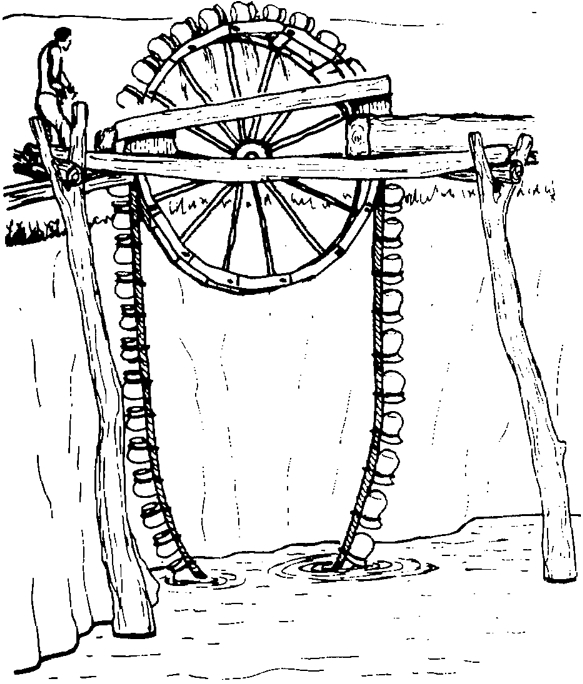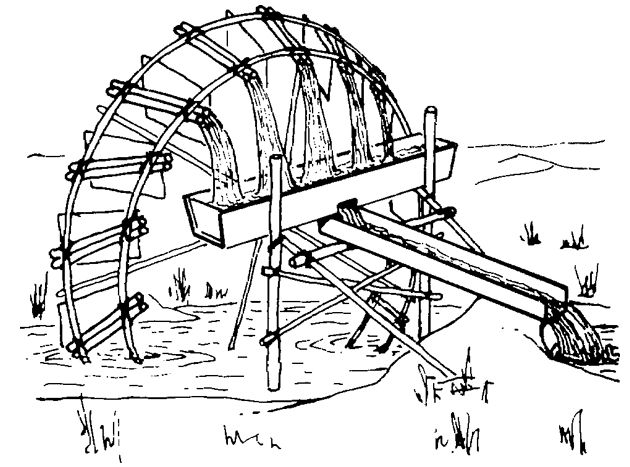Bucket elevators, Persian wheels and Norias
An obvious improvement to the simple rope and bucket is to fit numerous small buckets around the periphery of an endless belt to form a continuous bucket elevator. The original version of this, which is ancient in origin but still widely used, was known as a "Persian wheel"; the earliest forms consisted of earthenware pots roped in a chain which is hung over a drive wheel. The water powered "noria", a water wheel with pots, buckets or hollow bamboo containers set around its rim, is similar in principle except the containers are physically attached to the drive wheel circumference rather than to an endless belt suspended from it.
The flow with any of these devices is a function of the volume of each bucket and the speed at which the buckets pass across the top of the wheel and tip their contents into a trough set inside the wheel to catch the output from the buckets. Therefore, for a given power source and speed of operation roughly the same number of containers are needed regardless of head. In other words, a higher head Persian wheel requires the buckets to be proportionately more spaced out; double the head and you more or less need to double the spacing.
The Persian wheel has been, and still is, widely used particularly in the north of the Indian sub-continent, while the noria was widely used in China, S.E. Asia and to some extent in the Middle East and being normally water powered. Both devices are tending to be replaced by more modern mechanical water lifting techniques as they are old-fashioned and low in output. It should be noted that the term "Persian wheel" is sometimes used to describe other types of animal powered rotary pumps.
Although Persian wheels and norias are mechanically quite efficient, the main source of loss from these types of device is that some water is spilled from the buckets and also there is a certain amount of friction drag caused when the buckets scoop up water, which again reduces efficiency. Also, the Persian wheel is obliged to lift the water at least 1 m (or more) higher than necessary before discharging it into a trough, which can significantly increase the pumping head, particularly in the case of low lifts. The traditional wooden Persian wheels also inevitably need to be quite large in diameter to accommodate a large enough collection trough to catch most of the water spilling from the pots; this in turn requires a large well diameter which increases the cost.


